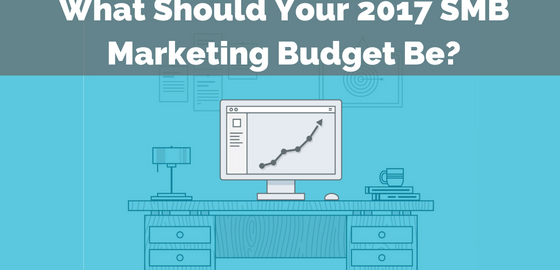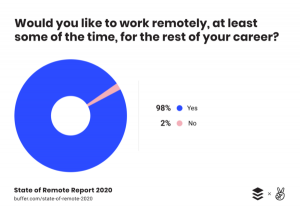Struggling to set your 2017 SMB marketing budget?
Many small businesses are grappling to keep up with the constant challenges and changes of digital marketing, and so are their budgets.
The misconception that some marketing tactics — especially social media marketing — are free, only adds to the unrealistic expectations SMBs face when trying to calculate budgets.
Here’s what our research indicates a healthy SMB marketing budget should be in 2017.
SMB Marketing Budget Research
The CMO Survey Report, conducted in August of this year, came to the following conclusions regarding marketing spending:
- Overall marketing budgets are set to increase from 6% to 7.2%
- Marketing budgets typically represent around 11% of a company’s budget
- Marketing spends are about 7.5% of a company’s revenues
The Outsell Annual Advertising and Marketing Study 2016 shows that:
- Digital represents nearly half of all marketing spending, rising over 12%
- The fastest growing spend category for the digital marketing budget is mobile (which make sense due to Google’s most recent mobile update)
- Significant spending will be placed on creative and content capabilities to assist with cross-channel campaign efforts
And the Marketing Charts 2016 Marketing Budget Trends, by Channel indicates that these marketing channels will see more in spending:
- 6 in 10 respondents reported planning to increase their email marketing spending this year
- Social media marketing is directly behind email marketing with 56.3% of marketers planning to increase spend
- Display advertising is in third (55.9% of marketers plan to increase budgets here)
Decreases in spend, according to Marketing Charts will be seen with:
- Print advertising
- TV advertising
- Radio advertising

[Source: Marketing Charts]
Digital Marketing Budget Breakdown
One more place to consider when figuring out where to allocate funds in 2017 is Paid, Owned and Earned Media …
Paid Media [think advertising]
- Pay Per Click (PPC)
- Display ads
- Retargeting
- Paid influencers
- Paid content promotion
- Social media ads
Owned Media [think online properties]
- Website
- Blog
- Email (also called “granted” media)
- Mobile site
- E-Commerce store
- Social media channels (though these are really rented!)
Earned Media [think sharing]
- Shares
- Mentions
- Reposts
- Reviews
- User-generated content

Where you should invest depends on what you have more of, time or money.
If you have more TIME … but not a lot of money, look to invest in non-paid efforts to attract web traffic, like content marketing (website or blog), organic SEO, gorilla outreach efforts, and organic social media. Remember that if you’re looking for instant results, like leads, you must have some sort of budget for paid media.
If you have more MONEY … but not a lot of time, focus on paid efforts such as Google AdWords and paid social media traffic to your website.
If you have neither TIME or MONEY … you may want to consider partnering with someone who has a large list as an affiliate. They can generate income by generating sales on your product/service from their list.
Estimated Monthly Budget: $ 3,500
Keep in mind this is a minimum recommended monthly budget, and it may or may not fit your small business. A SMB marketing budget will vary for several reasons:
- Available time and budget
- Resources available
- Knowledge
Here’s how the estimated SMB marketing budget is usually spent by one of our typical clients.
OWNED
- Website: This is not for developing a brand new website, but for the monthly cost of making updates and improvements to keep your site up to date. (10-20 hours a month)
- Email marketing: You not only have to come up with creative ways to build your list, you have to actively maintain it with content and other clean-up initiatives. (15-25 hours a month)
- Blog: Writing articles like this one takes research, linking strategy, design, and lead generation or captures to grow your list (for email marketing!). Post frequencies are typically weekly with our clients, but some companies choose to post more often. Word count and length are a big factor with time to completion as well! (15-25 hours a month — *based on 1 published post per week)
- Social media content: Though you’re “renting” your social media sites, the organic content you create for them is essentially owned by you. This is where much of your “earned” media efforts will come in. Depending on how many channels you’re active on, and how many posts you create each day, this can be a full-time job! (20-30 hours a week)
PAID
- Pay-per-click (PPC): PPC ads are run through Google and its partner networks. These can also include retargeting ads. With all ads, there’s strategy, design, copywriting, logistics (like setting up goal completions or UTM parameters), and reporting. PPC ads in particular often require daily optimization. (5-10 hours a week)
- Social media ads: Social media ads are often run on Facebook, Twitter, Pinterest, YouTube and Instagram for our clients. They can also include retargeting and paid content promotion. As with PPC ads, there’s strategy, design, copywriting, logistics (like setting up goal completions or UTM parameters), and reporting. (5-10 hours a week)
Marketing Isn’t Free Or Cheap!
Small business owners are often surprised at the minimum recommended budget we suggest.
Sure, you could certainly slash a few of those tactics off the list and reduce your overall cost. But that thinking often leaves businesses unsatisfied with their results.
Digital marketing uses many channels for cross promotion and the integration of messaging. Using only one or two of these channels may not put you in front of your intended target audience.
Though our minimum suggestion isn’t right for every SMB marketing budget, the research shows that overall marketing budgets are increasing to keep up with the consumer demand to “be everywhere.”
What’s your budget look like for 2017? Care to share? Let us know in the comments section below!
Business & Finance Articles on Business 2 Community(37)
Report Post







